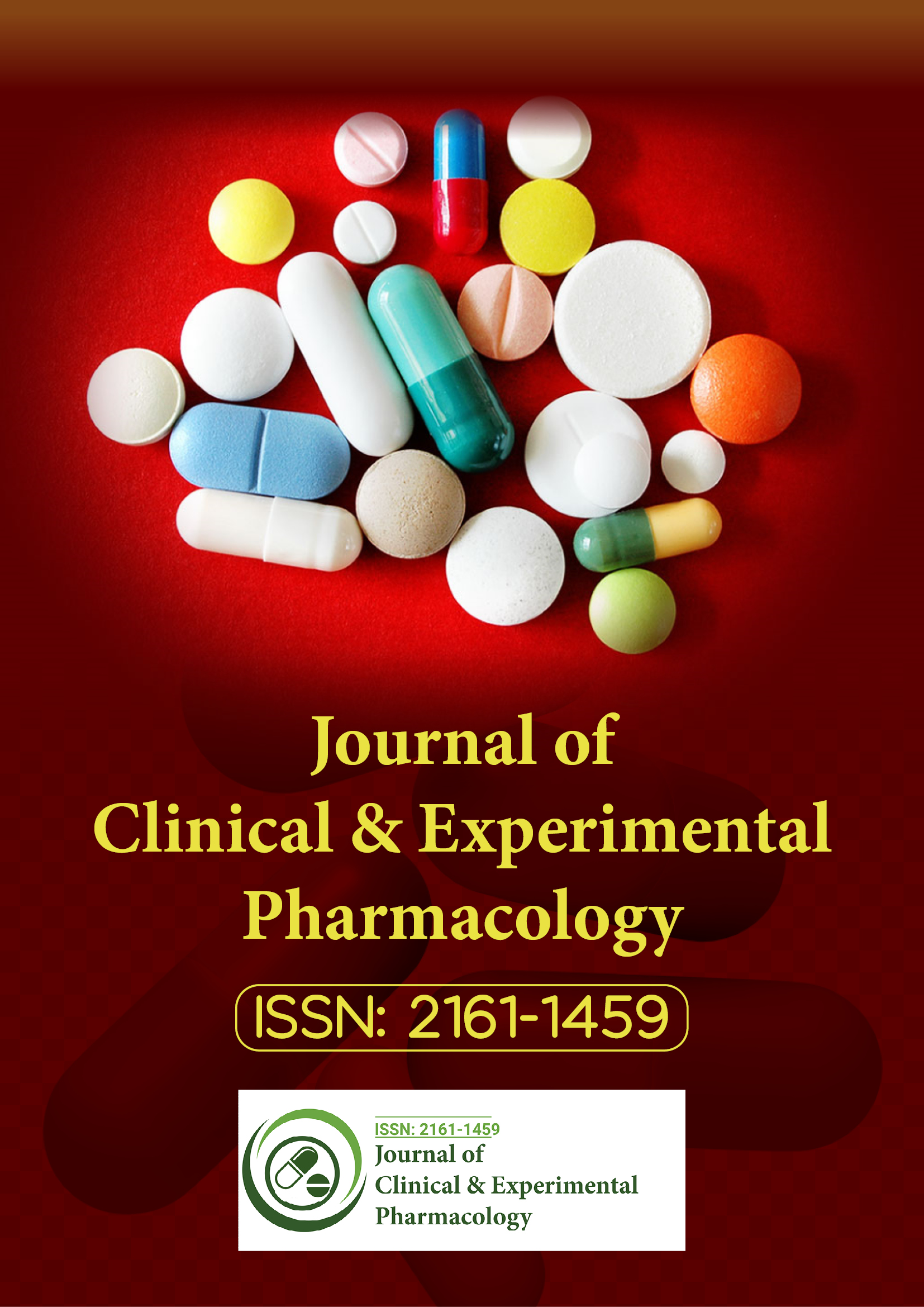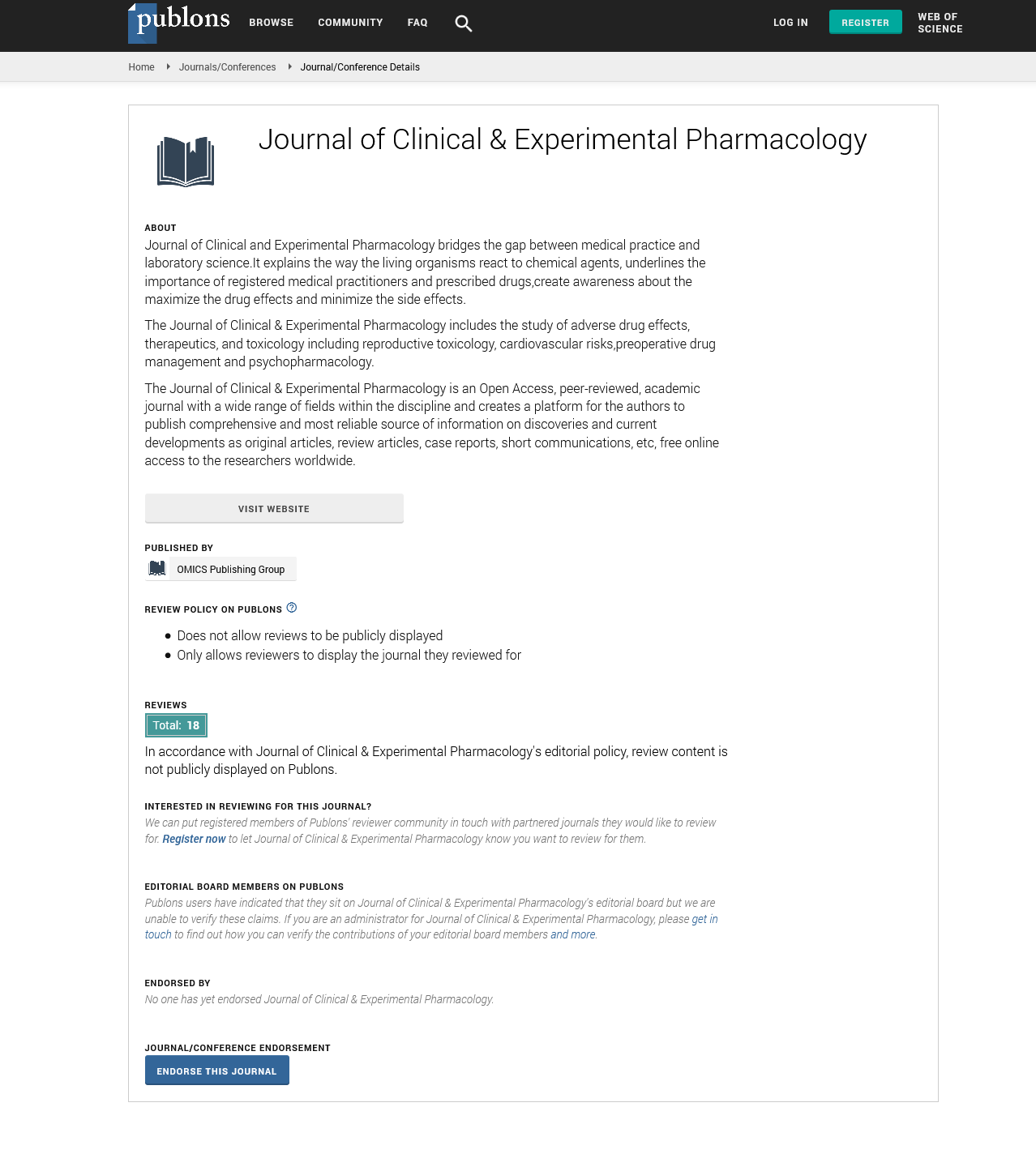Indexed In
- Open J Gate
- Genamics JournalSeek
- China National Knowledge Infrastructure (CNKI)
- Ulrich's Periodicals Directory
- RefSeek
- Hamdard University
- EBSCO A-Z
- OCLC- WorldCat
- Publons
- Google Scholar
Useful Links
Share This Page
Journal Flyer

Open Access Journals
- Agri and Aquaculture
- Biochemistry
- Bioinformatics & Systems Biology
- Business & Management
- Chemistry
- Clinical Sciences
- Engineering
- Food & Nutrition
- General Science
- Genetics & Molecular Biology
- Immunology & Microbiology
- Medical Sciences
- Neuroscience & Psychology
- Nursing & Health Care
- Pharmaceutical Sciences
Basis of molecular recognition and functional selectivity of antihypertensive drugs in the angiotensin II type 1 receptor
World Congress on Pharmacology
July 20-22, 2015 Brisbane, Australia
Sadashiva Karnik
Keynote: Clin Exp Pharmacol
Abstract:
Angiotensin II type 1 receptor (AT1R) is a G-protein-coupled receptor that serves as a primary regulator for blood pressure maintenance. Both peptide and non-peptide ligands of AT1R have been clinically used as anti-hypertensives. The AT1R blockers (ARBs) are widely used non-peptide drugs that share a common chemical scaffold but still display diverse pharmacological properties. ARBs differ from peptide AT1R antagonists in therapeutic efficacies towards cardiovascular etiologies; however structural basis of AT1R modulation by ARBs and peptide antagonists remains unknown. High-resolution crystal structure of the human AT1R in complex with experimental antihypertensive antagonist ZD7155 (at 2.9 � resolution) lead us to deduce common and distinct contacts with receptor for different ARBs and their structural analogs of diverse pharmacological properties. Specifically, our analyses indicate that the common chemical scaffold of ARBs interact with residues Tyr351.39, Trp842.60, and Arg167ECL2 in AT1R. We identified specific interactions of AT1R towards Olmesartan derivatives with inverse agonist, neutral antagonist or agonist activities as well as different ARBs using site-directed mutagenesis. Binding of Angiotensin II but not functionally biased peptide agonist TRV120027 is discriminated by mutations targeting a sodium ion binding site predicted by AT1R crystal structure indicating that functional selectivity of AT1R peptides ligands is allosterically Na-modulated. Based on these studies we will discuss the mechanism of functional selectivity of AT1R-specific ligands which provide fundamental insights into structure-function mechanism and may lead to design of novel drugs.
Biography :
Sadashiva Karnik is a Professor of Molecular Medicine at Lerner Research Institute of Cleveland Clinic Lerner College of Medicine, Cleveland, Ohio, USA. He obtained his PhD from Indian Institute of Science, Bengaluru in Molecular Genetics, Post-doctoral training at ETH Zurich, Switzerland and MIT, Cambridge, USA. He joined Cleveland Clinic in 1990 and has been a world leader in the studies on angiotensin receptors with more than 100 publications from the Karnik?s Laboratory at Molecular Cardiology Department of Cleveland Clinic, Cleveland, USA.

